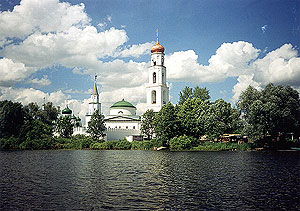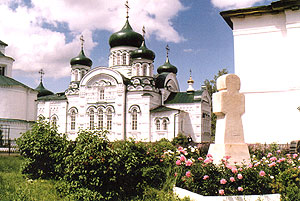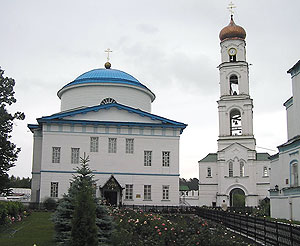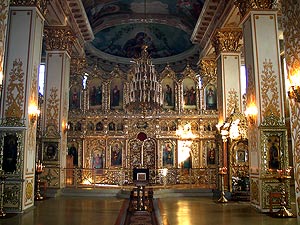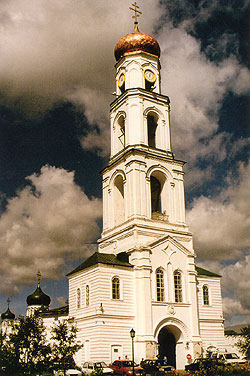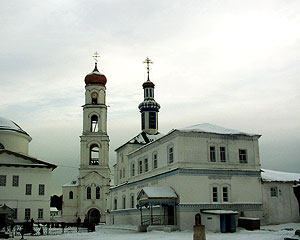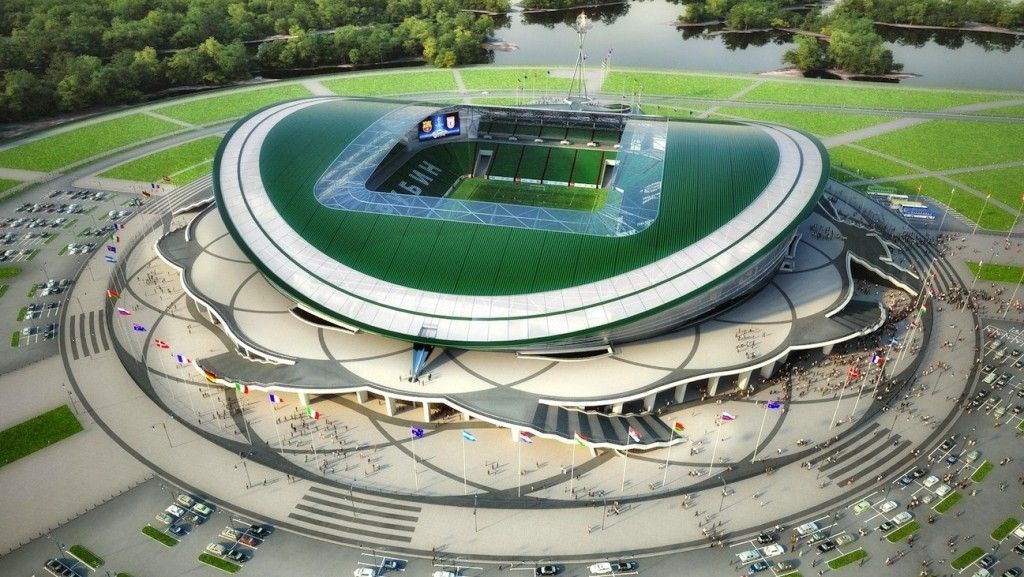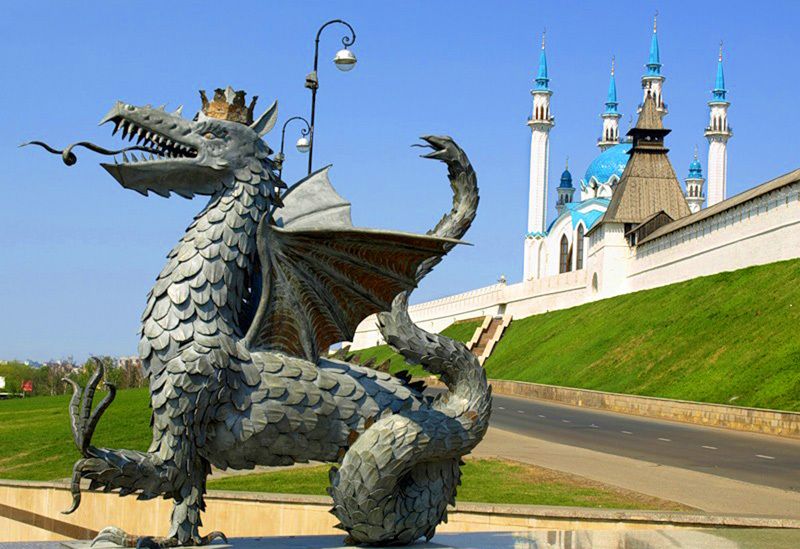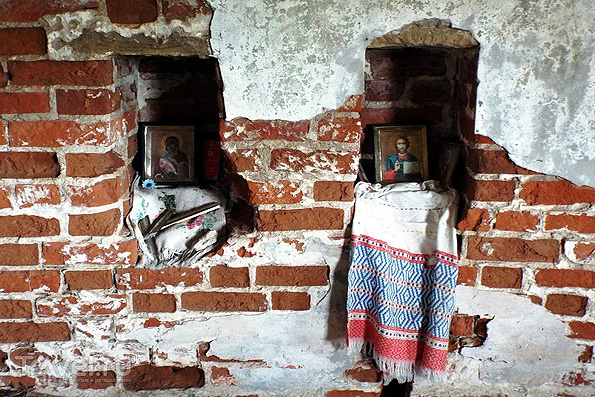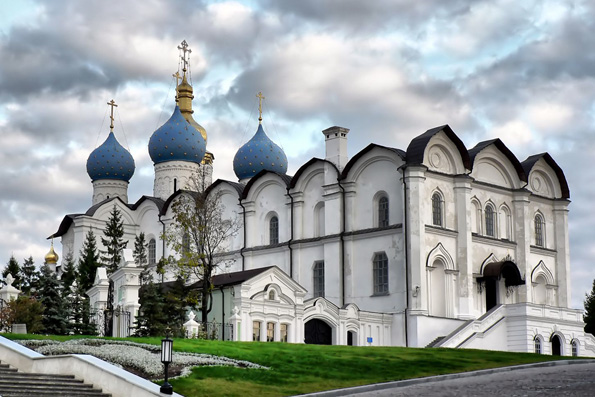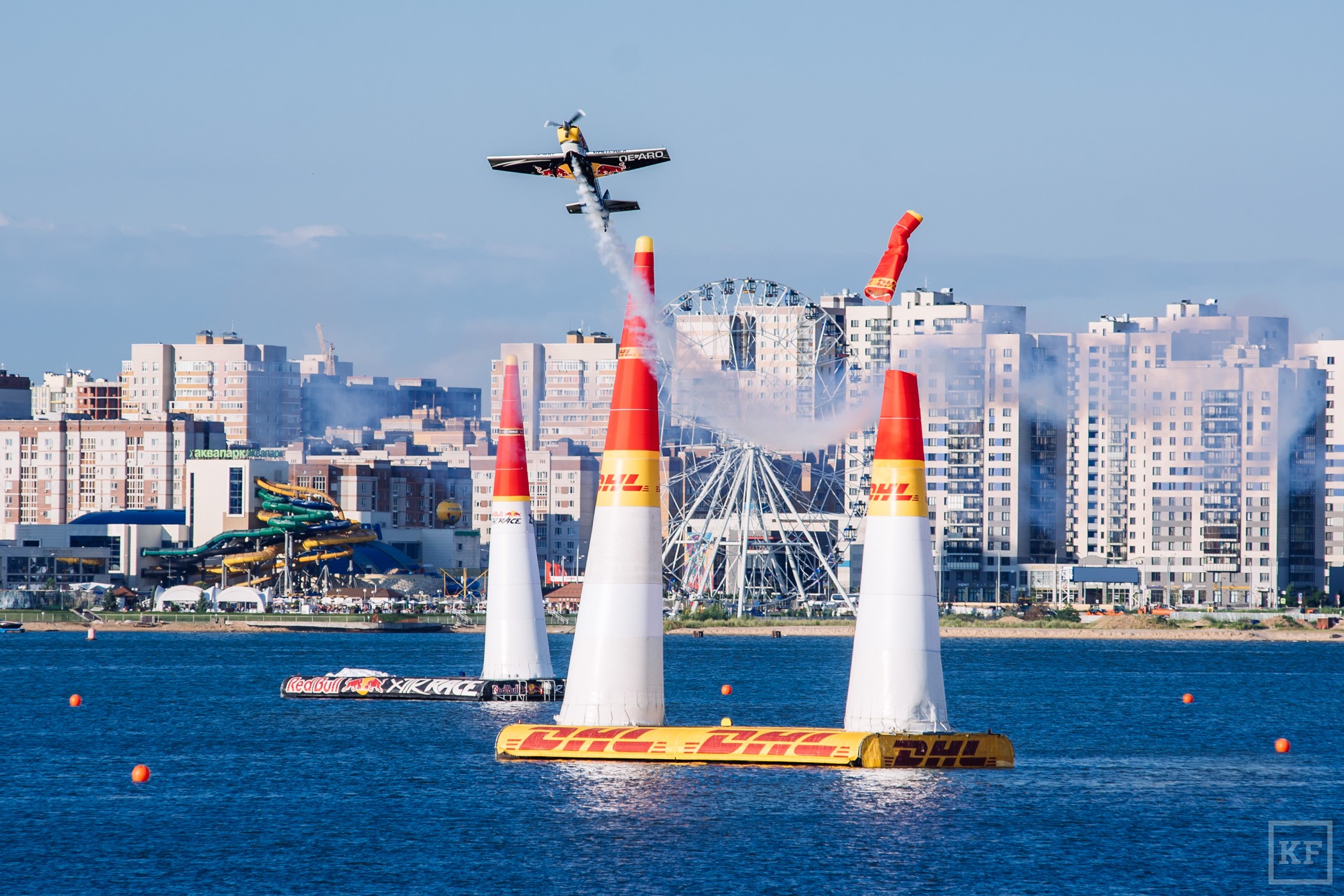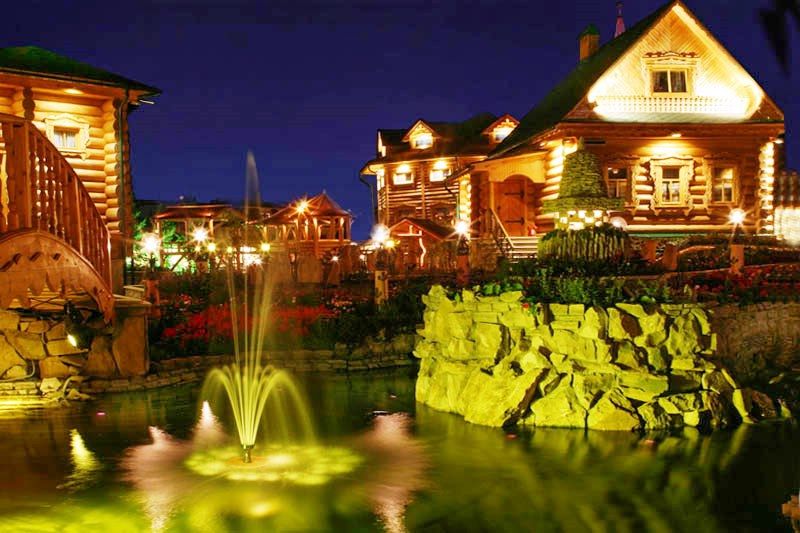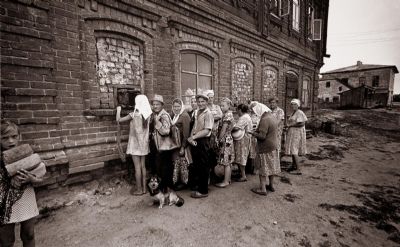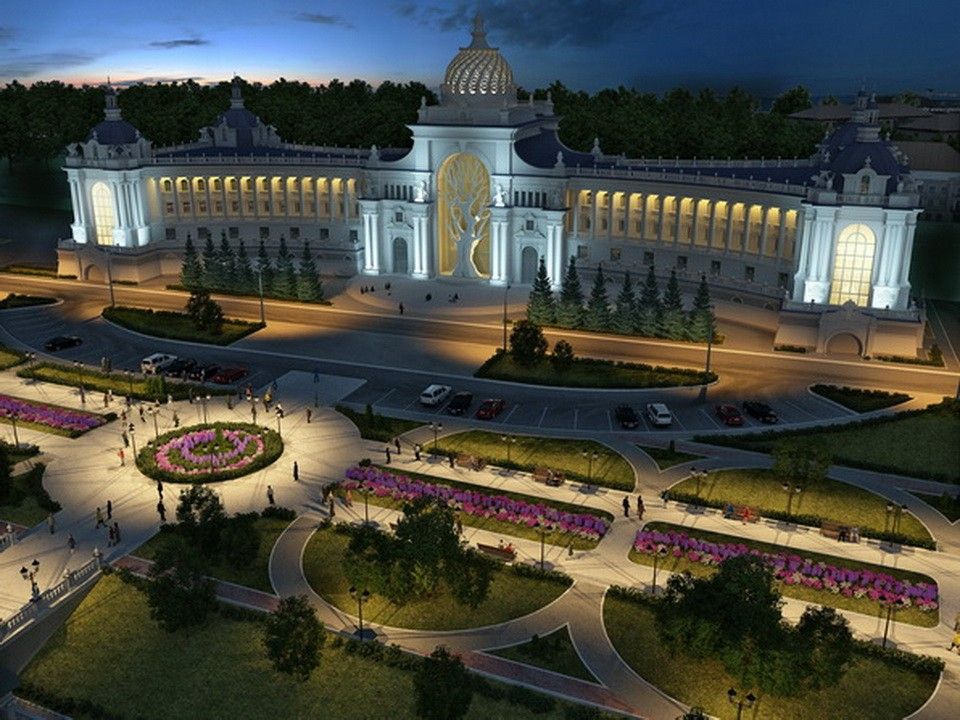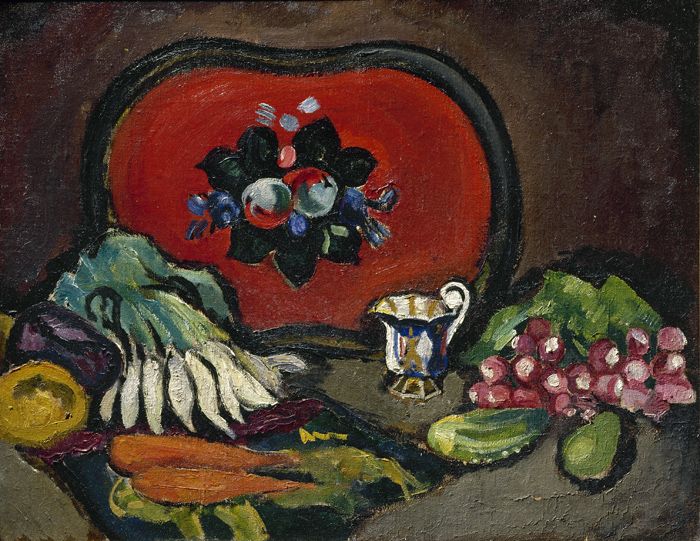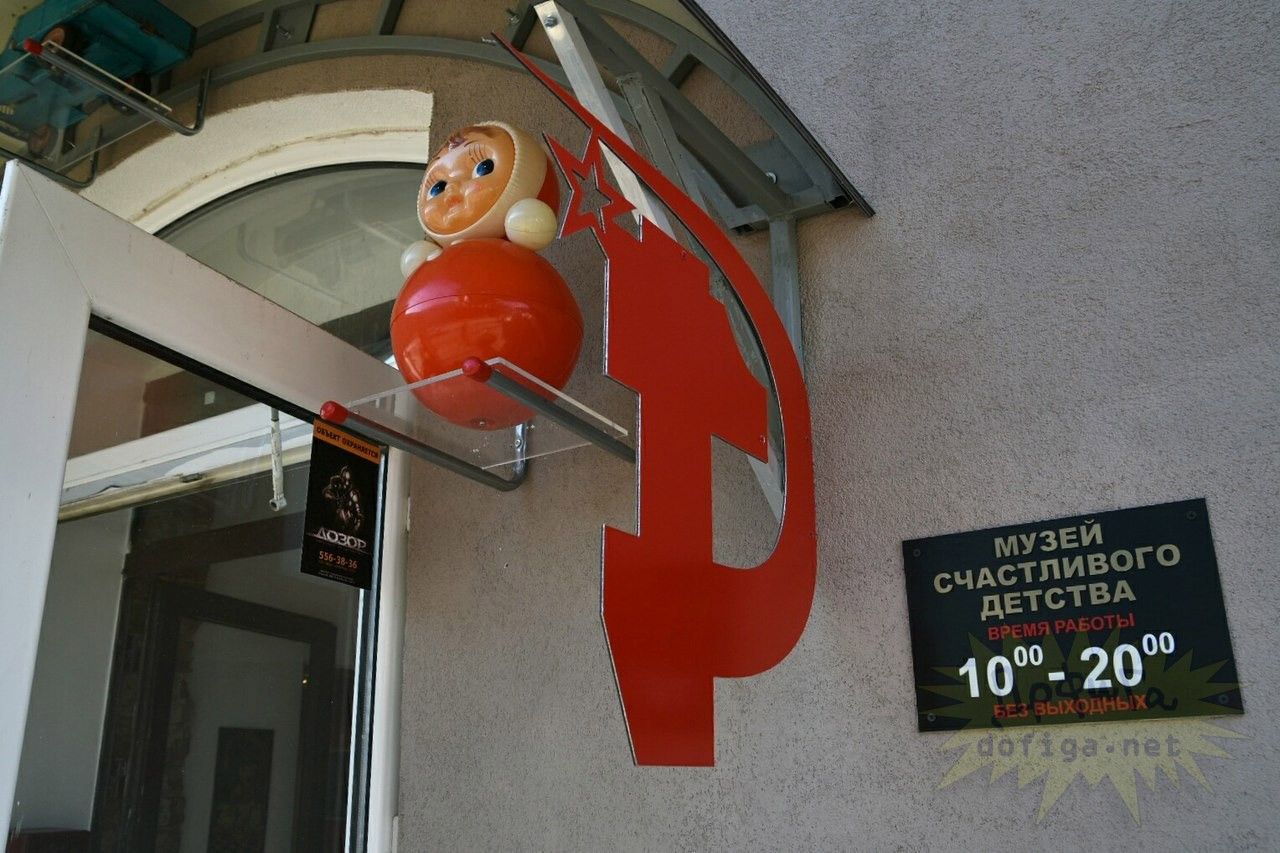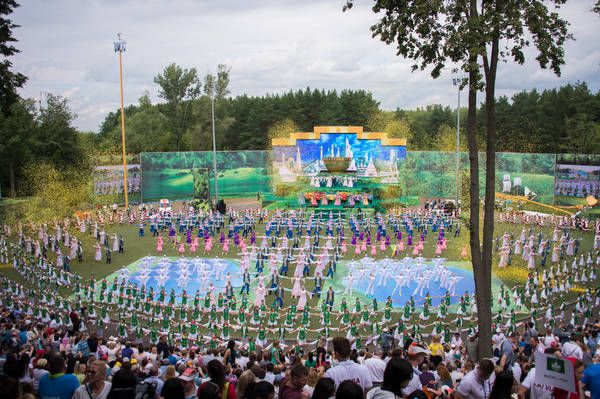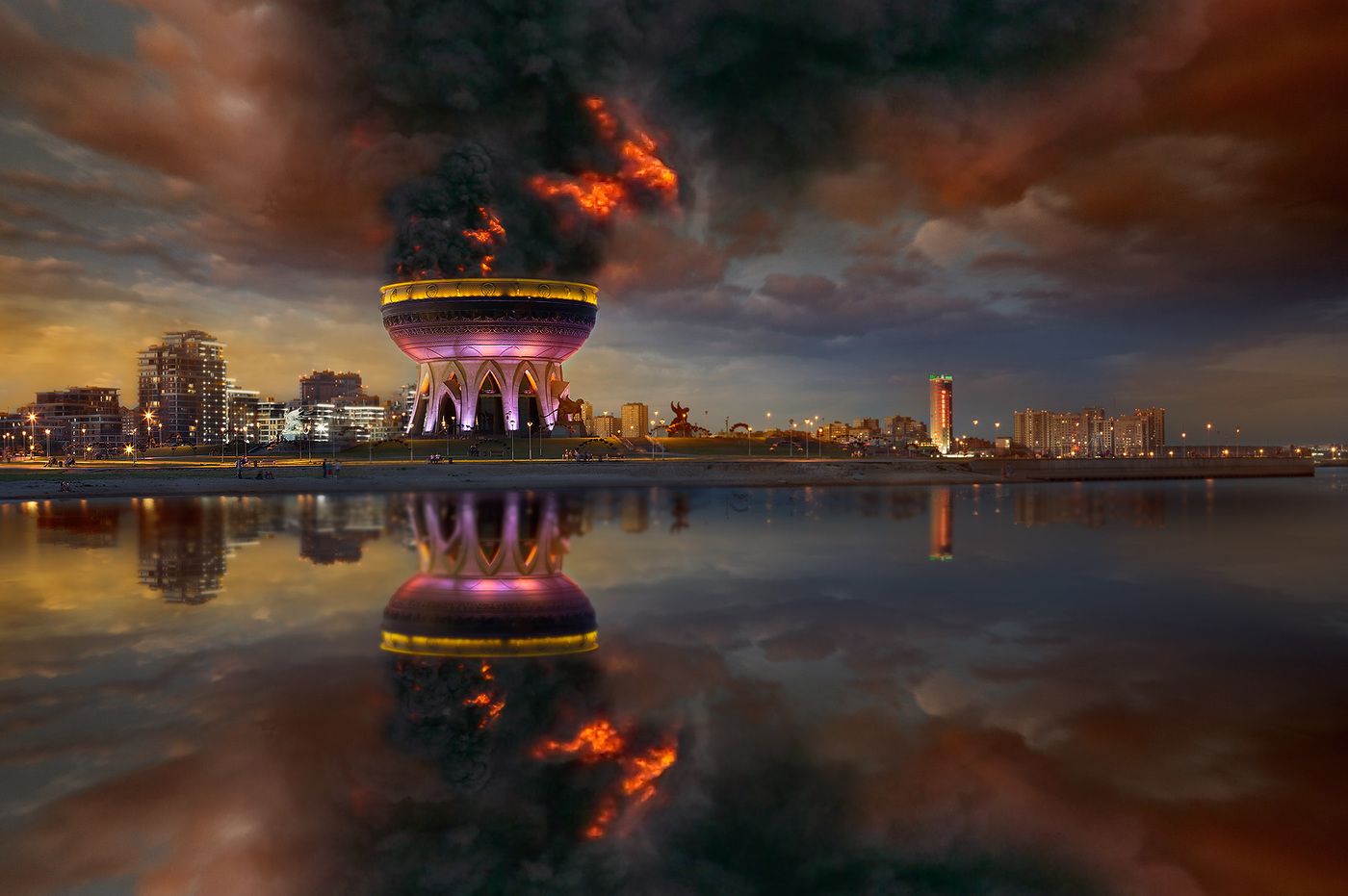The monastery, originally a coenobitic hermitage sanctified in the name of Reverend fathers tortured in Sinai and Raithu, was founded in 1613 by monk Filaret under Tsar Mikhail Feodorovitch. This monk Filaret came from Moscow, where he was a dweller of the Chudov Monastery. Living in that dwelling place, he turned out to be an eyewitness of the martyrdom of St. Patriarch Hermogen cloistered in the monastery. Since this holy hierarch governed once the land of Kazan in the rank of Metropolitan of Kazan and Sviyazhsk, it might be not a chance that monk Filaret appeared in Kazan, where the clergy and laymen have not forgotten yet his archpastoral ministry. Thus, monk Filaret served as the tying link between the patriarch cloistered in the Chudov Monastery and Mitropolitan Ephraim of Kazan, who became the head of the Russian Church after St. Hermogen’s martyred repose.
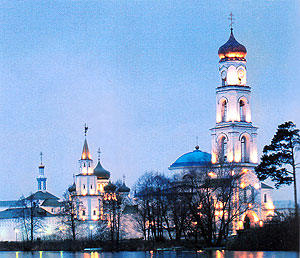
The family of monk Filaret was quite rich. Having got his part of inheritance, he gave it up to beggars, and went to the Moscow Chudov Monastery, where he was tonsured a monk. Some years later, he entered the community of the Kazan Savior’s Transfiguration Monastery. The worldly clamor of the city of Kazan, which disturbed peace of the monastic life, made Filaret seek solitude in the forests, which surrounded Kazan. One time, he found himself in a place amidst the forest, on the shore of a picturesque lake. He was charmed with the view of this place, which location was quite convenient for a hermit. There he built for himself a squalid hut. At first the monk’s cell stood in a completely solitude broken sometimes by the Cheremiss tribes, who came there to commit their pagan rites. But soon the place, where the monk lived fasting and praying, became known among the Kazan citizens, who venerated him and started visiting him in the wood. Some of them made up their minds to devote their lives to monastic exploits and settled nearby. This way was led a foundation for the monastic skete on the shore of a beautiful lake.
Holy Trinity Cathedral
The Holy Trinity Cathedral was built by design of architect F.N. Malinovsky. The temple was famous for its remarkable acoustics, so that the singing of four monks on the church gallery one could hear in the distance of two versts (7, 000 feet) from the monastery.
The monastery was closed in 1928. A parish community headed by Hieromonk Iosif was placed there for one year and a half until on January 27, 1930, the commemoration day of Reverend fathers tortured in Sinai and Raithu, all monks of the monastery together with the nuns and laymen, gathered in the church in order to celebrate the patron saint’s day were arrested. Six dwellers of the Raifa Monastery, among them hieromonks Iosif, Sergy,
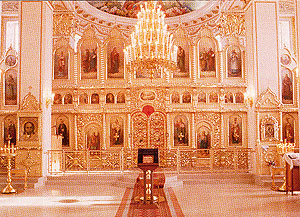
The Raifa Monastery was the first of the cloisters existed in the
Cathedral of God’s Mother of Georgia
The main shrine of the Raifa Monastery is the miracle-working icon of the Mother of God of Georgia (a copy made from the Krasnogorsky image).
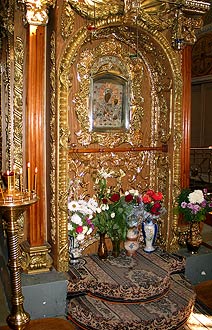
Church of SS. Reverend Fathers tortured in Sinai and Raithu
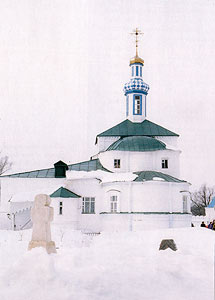 The Church in honor of SS. Reverend Fathers tortured in Sinai and Raithu was erected instead of the first wooden temple and consecrated in 1708. Later on the church was reconstructed by designs of architects A.G. Nevinsky (1892) and N.F. Malinovsky (1897). After the Raifa Monastery was returned to the
The Church in honor of SS. Reverend Fathers tortured in Sinai and Raithu was erected instead of the first wooden temple and consecrated in 1708. Later on the church was reconstructed by designs of architects A.G. Nevinsky (1892) and N.F. Malinovsky (1897). After the Raifa Monastery was returned to the 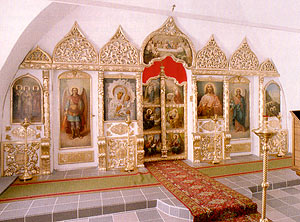
The latest constructions of the monastery were the bell-tower, the over-the-gate
The legend runs that before constructing the chapel the monks saw some special omens of benediction given by Lord. One of the monks saw a blessing palm from behind a light cloud above the place chosen for building of a chapel. The others heard the bell, which started ringing at the same time. When Filaret died (approximately in 1659), he was buried at the Monastery of the Savior’s Transfiguration. It was the monk Faddey, who on behalf of the hermitages’ brethren applied to Metropolitan Lavrenty of Kazan and Sviyazhsk for blessing to foundation of the monastery. Lavrenty granted a blessing to such a benefaction and sent Hieromonk Savvaty, a very experienced one in construction works, to raise a holy tabernacle. In 1662 the earliest wooden church was built. It was consecrated in honor of St. Evfimy, the archbishop of
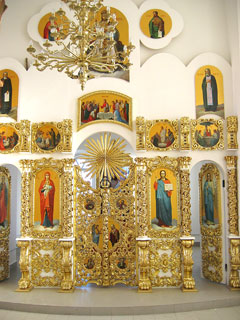
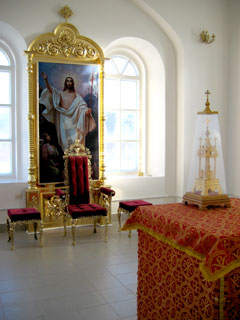
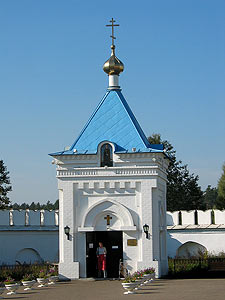 The earliest temples of the monastery of Raifa were consecrated under the Metropolitan Lavernty. Owing to the Hegumen Savvaty’s petition he sent to Tsar Alexey Mikhailovich, the Monastery of Raifa was granted a plot of land on the riverside of
The earliest temples of the monastery of Raifa were consecrated under the Metropolitan Lavernty. Owing to the Hegumen Savvaty’s petition he sent to Tsar Alexey Mikhailovich, the Monastery of Raifa was granted a plot of land on the riverside of
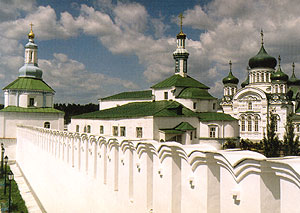 The legend goes that one day Hegumen Veniamin was going to reconstruct the tower, but he had doubts about such a serious undertaking as he had neither money not materials required. Not having anyone to address for a counsel, he decided to consult about the problem with a child, whom he accidentally would meet in the street. So, he left the cloister, walked about a kilometer and saw a woman with a little girl. When they approached, the priest blessed them and asked the girl’s name. She said her name was Masha. When the hegumen asked Masha (Maria) about her age, to his great surprise the girl said she was about 30 million years old. But the girl’s mother said the child was about four years old. The hegumen asked Masha whether he should or should not build the bell-tower.
The legend goes that one day Hegumen Veniamin was going to reconstruct the tower, but he had doubts about such a serious undertaking as he had neither money not materials required. Not having anyone to address for a counsel, he decided to consult about the problem with a child, whom he accidentally would meet in the street. So, he left the cloister, walked about a kilometer and saw a woman with a little girl. When they approached, the priest blessed them and asked the girl’s name. She said her name was Masha. When the hegumen asked Masha (Maria) about her age, to his great surprise the girl said she was about 30 million years old. But the girl’s mother said the child was about four years old. The hegumen asked Masha whether he should or should not build the bell-tower.
— Yes, build it, — she said.
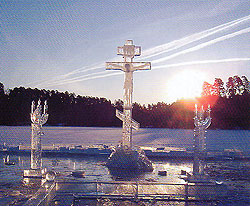 The elder blessed the child and returned to the monastery.
The elder blessed the child and returned to the monastery.
On the same day he gave orders that the workers had to be employed, and the scaffoldings and instrumentals prepared. The next day merchant Mikhail Atlashkin arrived the monastery and told the hegumen that he was going to make a donation of one million bricks to the monastery, but was afraid, whether it would be an appropriate gift at the moment. The hegumen was surprised. “Yes, we have just decided to raise the bell-tower and we need a lot of bricks”. The same day Atlashkin started to supply the bricks.
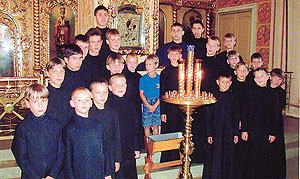 On September 14, 1891 on the celebration of the Exaltation of the Life-Giving Cross the new belfry was crowned with the cross. In 1903 the altar of the church over the gates was consecrated in honor of the Archangel Michael, the heavenly patron of merchant Mikhail Atlashkin.
On September 14, 1891 on the celebration of the Exaltation of the Life-Giving Cross the new belfry was crowned with the cross. In 1903 the altar of the church over the gates was consecrated in honor of the Archangel Michael, the heavenly patron of merchant Mikhail Atlashkin.
At present, the holy abode is going through a new period of bloom. The monastery is famous for its ecclesial and social activity. The brethren organized an orphanage, which is home for thirty orphans. They started a parish school. There is a library and a computerized laboratory. Most of the monks are the correspondent students of the Moscow Orthodox St. Tikhon’s Theological Institute and other theological seminaries. The monastery is the well-known centre of pilgrimage both for the ordinary believers and for
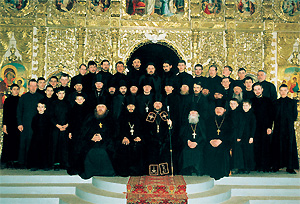
the prominent public and political figures, and for the workers of the Russian culture. Nowadays, the Raifa Monastery is the largest in the
Community of Raifa Monastery

